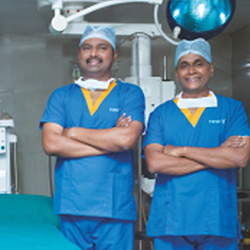Vertebroplasty and kyphoplasty are similar spinal procedures in which bone cement is injected through a small hole in the skin (percutaneously) into a fractured vertebra with the goal of relieving back pain caused by vertebral compression fractures. It was found to be effective in treating osteoporosis-related compression fractures of the spine. Evidence does not support a benefit of kyphoplasty over vertebroplasty with respect to pain, but the procedures may differ in restoring lost vertebral height.
Indications:
- 1. Wedge compression fractures
- 2. Osteoporotic spine fractures
- 3. Osteonecrosis
- 4. Benign or malignant tumor: hemangioma, multiple myeloma, metastatic lesion
Surgery:
It is usually done under general anaesthesia but can it can also be done under local anaesthesia in medically unfit patients. In vertebroplasty, bone cement is injected with a biopsy needle into the collapsed or fractured vertebra under fluoroscopic x-ray guidance. The injected bone cement quickly hardens and forms a support structure within the vertebra that provide stabilization and strength.
Post-surgery
You will usually only need to stay in the hospital for a few hours. You may need to stay longer if you have pain. You will be made to walk on the next day of surgery with protective brace.














